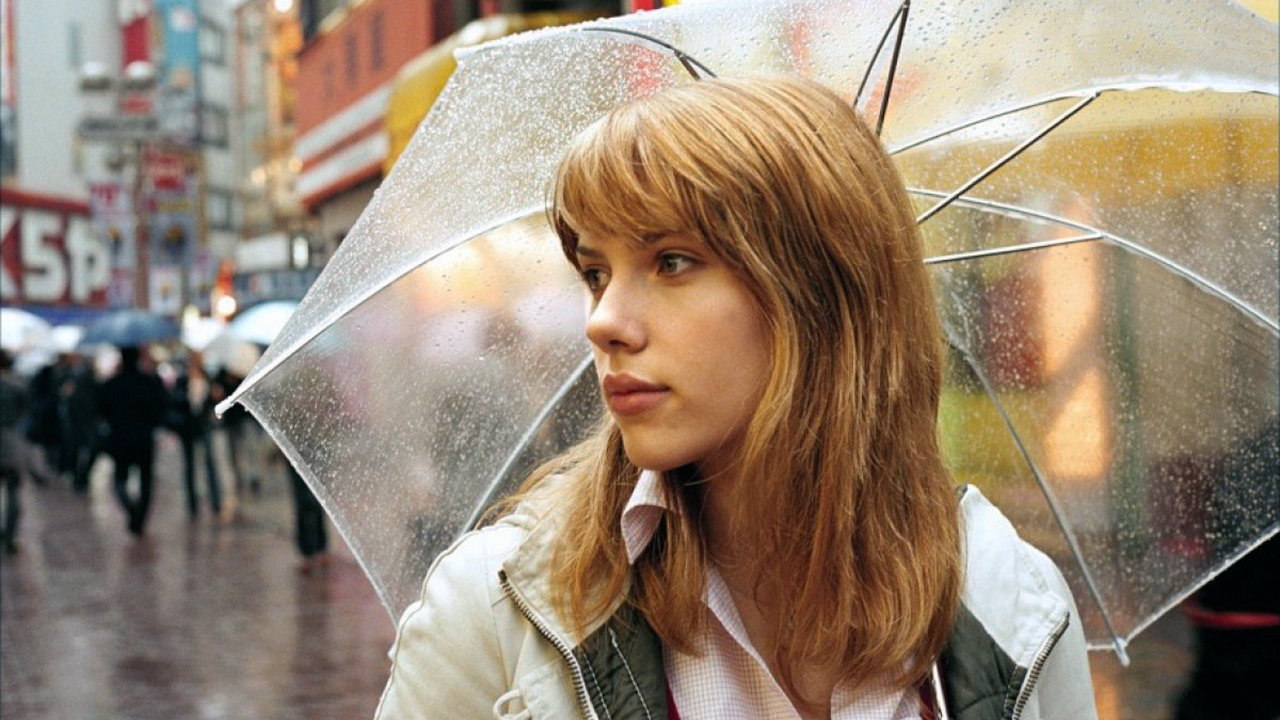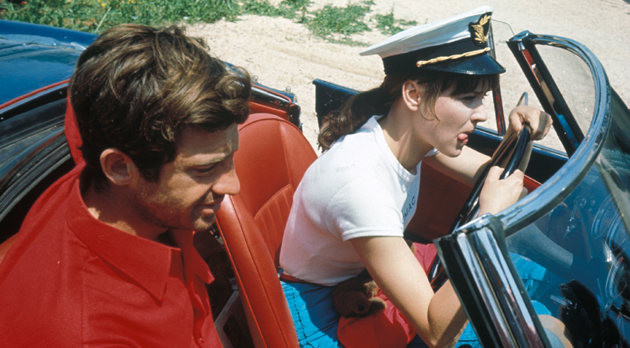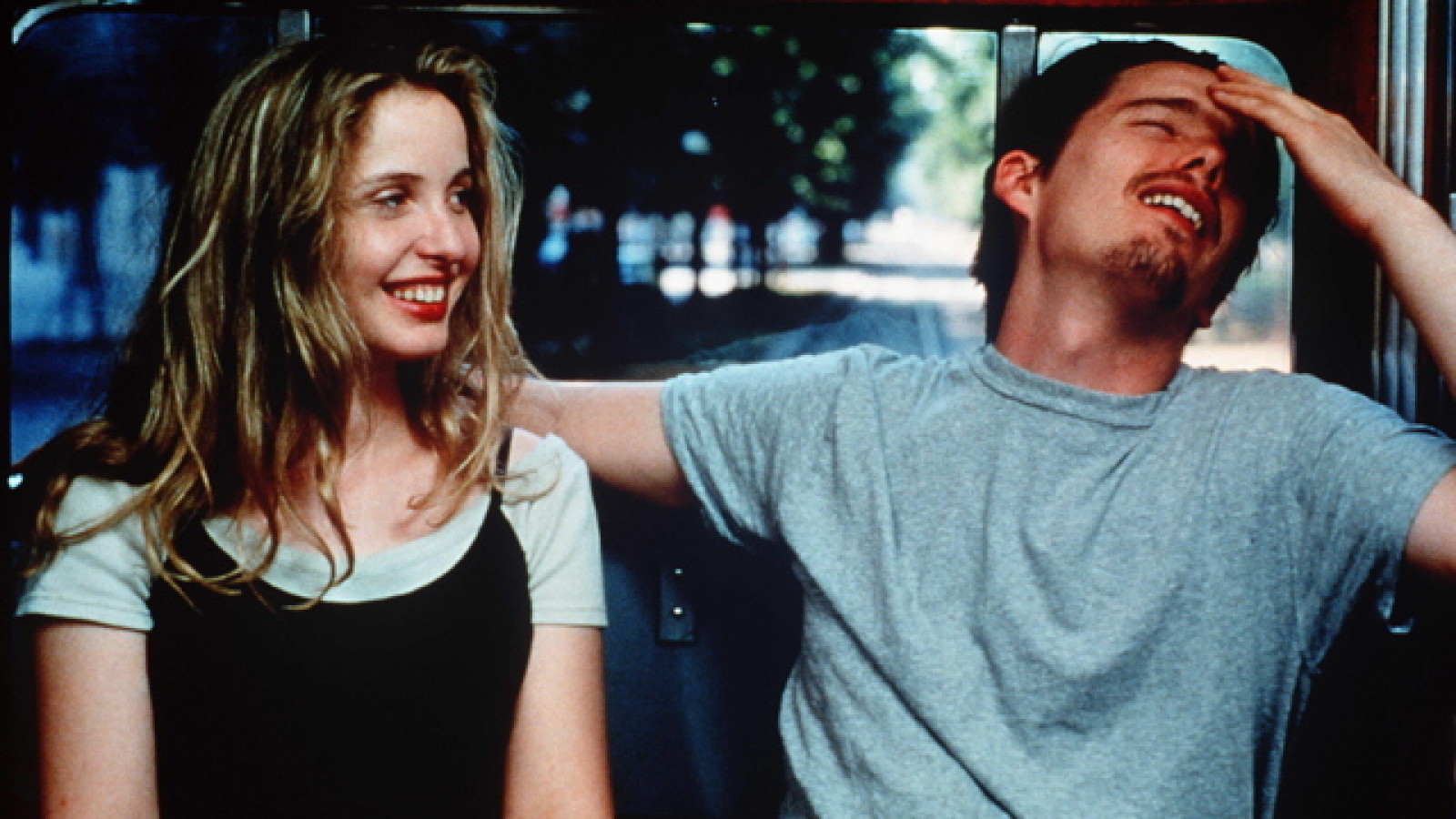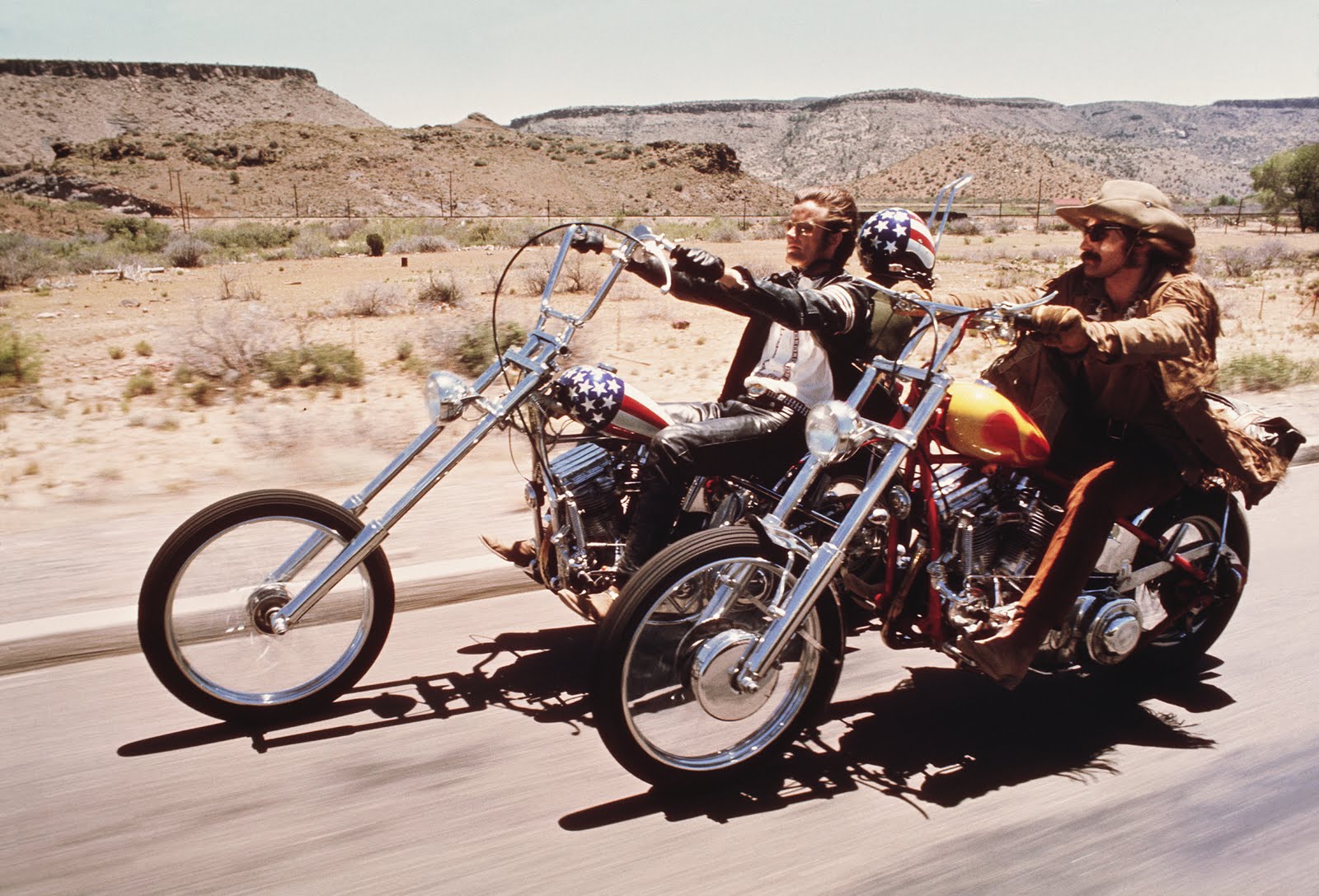5. Lost In Translation

Sofia Coppola’s greatest film to date is an overwhelming experience, an intoxicating mix of melancholia, sadnesss, humour, and profundity. Bill Murray and Scarlett Johansson are two lost souls in the also-overwhelming Tokyo metropolis. They meet in a hotel at a key point in their life and strike up a relationship through their struggles and their search for happiness and meaning.
Murray is a revelation as Bob Harris, an ageing American actor stuck doing alcohol commercials in Japan and stuck more generally in life; Johannson is Charlotte, a young, naive wife to a photographer husband.
Coppola wisely doesn’t extend the romantic aspect of the film, instead choosing to focus on the connection of their feelings. Bob and Charlotte begin to appreciate the anonymity that Tokyo offers them: they wander its crowded streets, sing at karaoke bars late into the night, and drink frequently in the hotel bar.
These characters are in a similar situation to Jesse and Celine in Before Sunrise, but whereas those two were earnest, ambitious and absorbed in future possibilities, Bob and Charlotte use Tokyo as an escape from their struggling states.
The film ends with a wonderfully poignant moment when Bob tears after Charlotte through a busy street and whispers something in her ear – which the audience never gets to hear – before they kiss and depart. It’s right that we don’t get to hear this, for it’s Bob and Charlotte’s to share together, the final word on their Tokyo relationship.
4. Y Tu Mama Tambien

Before he moved to Hollywood to make blockbuster classics like Children of Men (2006) and Gravity (2013), Alfonso Cuaron often made excellent films in his homeland of Mexico, like this one. Often billed as a travel film or a teen film, Y Tu Mama Tambien (2001) becomes so much more than merely being these, a road film that takes the viewer on a journey through life and death.
It’s also a powerful tale of Mexico before the new century, against a backdrop of political and economic change. It follows two teenagers, Tenoch and Julio, both well-off individuals, who meet an older woman, Luisa, at a wedding. They then agree to take a trip together, after her husband cheats on her.
Erotic possibilities soon unfold and the sexual aspects of the film feel true and raw, like how it would be in actual life. Luisa tries to teach them about sex and the secrets of men and women, and this narrative structures the film, but Cuaron also ensures that modern Mexico is explored properly: they pass police checkpoints, witness drug busts, and pass through poverty-stricken towns.
It was wise of Cuaron to return to Mexico to make this film, for it conveys just how much he had to say about his homeland and what he thought necessary to highlight about its landscape.
3. Pierrot le Fou

A colourful, mesmerising 1960’s film by Jean-Luc Godard, Pierrot le Fou (1965) resembles Weekend (1967) in many respects, both being about cross-country odysseys between a couple, but this has less on its mind and is more relaxed as a result.
The plot is loosely about Ferdinand, an unhappily married man who leaves his wife and bourgeois lifestyle to run away with his ex-girlfriend, Marianne. He then discovers that she is being chased by gangsters, having apparently killed a man, and a wild journey to the South of France.
Godard’s couple are similar too to Bonnie and Clyde, but their story is more light and elusive, as is his way. It’s a trip through his home country but also a trip through his homages to America: there are nods to Laurel and Hardy and Edgar Allen Poe, amongst others. Scenes are able to stand on their own, aside from the larger film, such is their hypnotic and bewildering energy. Pierrot Le Fou is subversive, enchanting, and stands as one of the great Frenchman’s best works.
2. Before Sunrise

The first part of one of the greatest cinema trilogies of all time, Before Sunrise (1995) is a romantic tale of young lovers done correctly. Richard Linklater never lets the narrative sink into soapy sentimentality, and the romance between Jesse (Ethan Hawke) and Celine (Julie Delpy) feels truly developed and real.
They meet randomly on a train in Austria where they start talking and immediately enjoy each other’s company. Jesse then boldly suggests that Celine cancels her trip back to Paris and spend the day with him in Vienna before he flies back home to America.
It’s a decidedly minimalistic film, reflecting the hesitancy of the early stages of love, as Jesse and Celine are working each other in small conversations and stolen glances. Linklater also does well to not make the narrative grander than it needs to be: there are no big reveals, no betrayals, no melodrama, just pure talking.
It’s an incredibly relatable film, the conversations and experience familiar to anyone who’s experienced the raw excitement of finding love in your 20’s. Vienna never takes precedence, not presented as a travelogue, but rather serving as lovely backdrop to Jesse and Celine’s tale. They meet poets, fortunetellers, they ride a ferris wheel and drink wine in a park; they experience Vienna in their own way, finding small moments of the real city.
Before Sunrise showcased again Linklater’s remarkable ability to capture ordinary lives and make them incredibly insightful and meaningful (after Slacker (1990) and Dazed and Confused (1993)). It’s a testament to this that what is essentially a ‘boy meets girl’ film can feel so profound and realistic, and the reason why audiences needed to find out more about these characters’ lives in later films.
1. Easy Rider

An iconic travel film and an iconic New Hollywood film: Easy Rider (1969) is nationally important, a remarkable counterculture picture that captured some of the spirit of the time. It astoundingly made $40 million on a budget of just $300,000 and helped spark a new streak of independent filmmaking in America from 1969.
The film follows two bikers, played by Peter Fonda and Dennis Hopper (also the director) as they travel through the American Southwest. They live in hippy communes, smoke a lot of marijuana, and take acid trips; these themes captured the imaginations of the youth generation and became one of their touchstones.
The stories of the shooting of the film have entered into legend, too, a chaotic time of drugs and fighting; they were crazy people making a crazy film. The soundtrack is excellent, full of classics by The Byrds, Steppenwolf, and Jimi Hendrix from the time. As these bikers drive through the stunning beauty of this area of America, the rock music is the perfect supplement to their travails.
Author Bio: Conor Lochrie is a Glaswegian currently travelling and working in New Zealand after 4 long and arduous years at university which he survived with a degree in Central and Eastern European Studies. Unsurprisingly, he now works in a warehouse but would much rather be watching and writing about cinema.